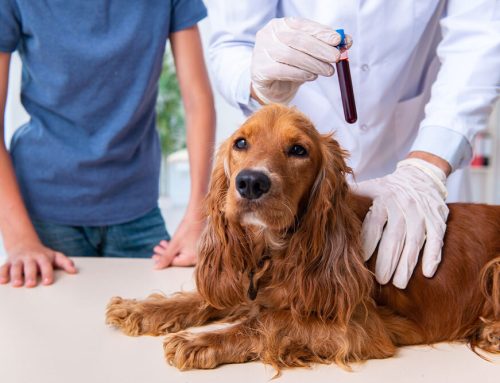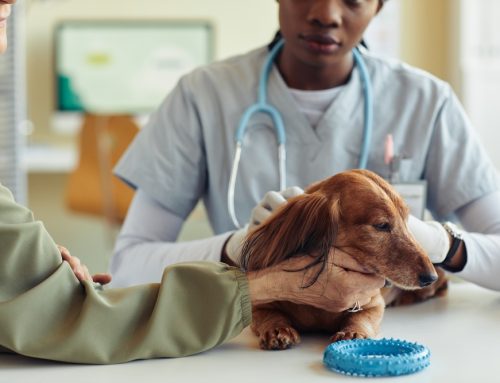Recognizing emergency signs in pets can significantly influence the outcome of medical crises. At Iris Veterinary Care, we prioritize the health and urgent care needs of your pets, ensuring you have the knowledge and resources to act swiftly when emergencies arise.
Recognizing Emergency Signs in Dogs and Cats
Understanding when your pet requires immediate medical attention can prevent complications or even save their life. Here are critical symptoms in dogs and cats that should never be ignored:
Respiratory Distress
Symptoms of respiratory distress include:
- Rapid or labored breathing
- Excessive panting that does not resolve
- Gasping for air or choking
- Blue or pale gums, indicating oxygen deprivation
A pet struggling to breathe is in a life-threatening situation. Keep them calm, avoid unnecessary movement, and seek emergency veterinary care immediately.
Possible Causes:
- Heart failure
- Pneumonia
- Airway obstruction (foreign object, allergic reaction)
Learn more about emergency signs in pets.
Severe Pain or Discomfort
Pets instinctively hide pain, but sudden behavioral changes may indicate serious discomfort. Signs of severe pain include:
- Restlessness, pacing, or difficulty lying down
- Whimpering, growling, or snapping when touched
- Persistent licking of a particular area
- Hunched posture or reluctance to move
Ignoring pain can lead to further complications. If your pet displays any of these signs, seek veterinary evaluation immediately.
Possible Causes:
- Internal injuries or trauma
- Infections or abscesses
- Bone fractures or joint issues
Learn how to perform a home exam for your pet.
Gastrointestinal Emergencies
Vomiting or diarrhea can sometimes be mild, but when persistent or accompanied by other symptoms, it may indicate a serious issue. Seek immediate care if your pet experiences:
- Multiple episodes of vomiting or diarrhea within a short time
- Blood in vomit or stool
- Signs of dehydration (sunken eyes, dry gums, skin that doesn’t snap back when pinched)
- A swollen or distended abdomen
Untreated gastrointestinal issues can lead to electrolyte imbalances, kidney failure, or shock.
Possible Causes:
- Dietary indiscretion (eating toxic or inappropriate foods)
- Pancreatitis
- Intestinal blockage (caused by swallowed objects)
Recognizing the severity of vomiting and diarrhea in pets.
Conducting a Basic Physical Exam at Home
When you suspect your pet is experiencing a medical emergency, a basic physical assessment can provide crucial information for your veterinarian.
Assessing Vital Signs
- Temperature: Normal range is 100°F – 102.5°F
- Pulse: Check on the inner thigh near the femoral artery (small dogs and cats: 120–160 bpm, large dogs: 60–100 bpm)
- Gum Color: Healthy gums are pink and moist; pale, blue, or bright red gums indicate an emergency
Neurological Assessment
Neurological emergencies can be life-threatening. Signs that require immediate veterinary attention include:
- Unequal pupil size or non-reactive pupils
- Loss of coordination, stumbling, or inability to stand
- Sudden disorientation or confusion
- Seizures lasting more than two minutes or occurring in clusters
These symptoms may indicate head trauma, toxin exposure, or a neurological disorder.
When to Visit Iris Veterinary Care
Certain conditions require immediate professional intervention. Seek emergency veterinary care if your pet experiences:
- Severe trauma (hit by a car, falling from a height, fight wounds)
- Poisoning or toxin ingestion (chocolate, antifreeze, medications, toxic plants)
- Seizures lasting more than two minutes or occurring repeatedly
- Excessive bleeding that does not stop with direct pressure
- Heatstroke symptoms (panting, collapse, vomiting, excessive drooling)
Being prepared for emergencies is crucial. Learn about pet first aid and CPR.
Preventing Emergencies Through Routine Care
Preventative measures can help reduce the risk of emergencies. Important steps include:
- Scheduling regular veterinary check-ups for early disease detection
- Keeping toxic foods and household items out of reach
- Providing a balanced diet and proper hydration
- Using appropriate pet restraints in cars and around hazards
Emergency Preparedness for Pet Owners
Knowing how to respond in an emergency can make a significant difference in your pet’s outcome.
- Locate the nearest emergency veterinary hospital in advance
- Keep a pet first-aid kit stocked with essentials
- Learn pet CPR and first aid to act quickly in critical situations
Becoming prepared for pet emergencies.
FAQs: Common Concerns About Pet Emergencies
What are the signs of shock in pets?
Shock can quickly lead to organ failure if untreated. Symptoms include:
- Pale or gray gums
- Rapid breathing
- Weak pulse
- Lethargy or unresponsiveness
How can I tell if my pet is dehydrated?
Dehydration can become life-threatening. To check hydration:
- Gently pinch the skin at the back of the neck. If it does not snap back quickly, dehydration may be present.
- Check for dry gums and sunken eyes.
What should I do if my pet has ingested poison?
Seek immediate veterinary care. Do not induce vomiting unless directed by a veterinarian. Some toxins, such as antifreeze or certain medications, can cause more harm if vomited.
Learn more about handling pet poisoning cases.
Recognizing signs of distress in your pet is crucial for their well-being and can significantly impact health outcomes. At Iris Veterinary Care, we provide expert emergency care to ensure your pet receives prompt, life-saving treatment.








Leave A Comment